Jon Koko is an artist who currently lives and works in Malmö, Sweden. His square illustrations and paintings are carefully balanced scenes with mostly flat color surfaces covering the full paper canvas. The subjects are landscapes and houses in axonometric views, interiors and several slightly surreal scenes with anonymous characters wandering through paradoxical situations. Nature plays a huge role in the works and a Japanese influence is always present in both the representation techniques, which remind wood-block Japanese printers and in the subjects, especially the wooden houses.
Interview with Jon Koko on Metalmagazine.
Update: Ario Miller has contributed with a very interesting comment in Italian, that we like to present here translated in English:
In Japanese art, for centuries and until the nineteenth century, Western perspective was a foreign visual and graphic experience. Neither Jesuit Matteo Ricci (1552-1610) or even his companion Giovanni Niccolò or Nicolao (1560-1616), who after coming to Macau in 1582, founded an Academy called “Seminario dei Pittori” in Kumamoto (Nagasaki) “(1590/ca. 1614), have succeeded in imposing it. The Academy proposed only devotional figures of saints and portraits. Nature was perceived, by the Japanese, as an emotion, a profound philosophical and poetic empathy, which necessarily excluded the three-dimensionality, the consciousness of what is existing and of lived space. Each part of the depictions was in itself, as a whole, an effect of the mind and not a representation of true nature. Their paintings are for this reason monochrome inks, linear, and rarely shaded, lacking any trace of depth. The first Japanese painter who was interested in studying and imitating the art of the Westerners, and who produced a set of xylographs with central point perspective projection and seldom two-points perspectives, was Hokusai (1760 – 1849). In the paintings of Jon Koko, looking almost as milky white-lead tempera, glowing and evanescent as immersed in the mist, depth is absent (in the form of three-dimensionality or perspective projection), as a resumption of the ancient maniera. It is manifested in every aspect of his works for the preference of the axonometric projections, as he rather prefers to express mental rather than natural content, distracted thoughts suspended between surrealism and unrealism. Faded dreams, where architectural environments and human presence float on an inside and an outside without space. Byzantine painting, in some ways, described the same impossible worlds.
All images © Jon Koko

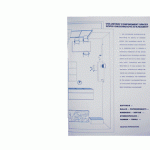
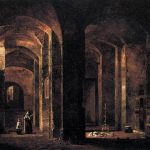
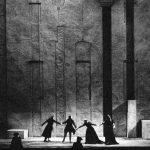
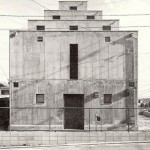
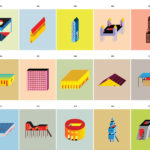
Superbe